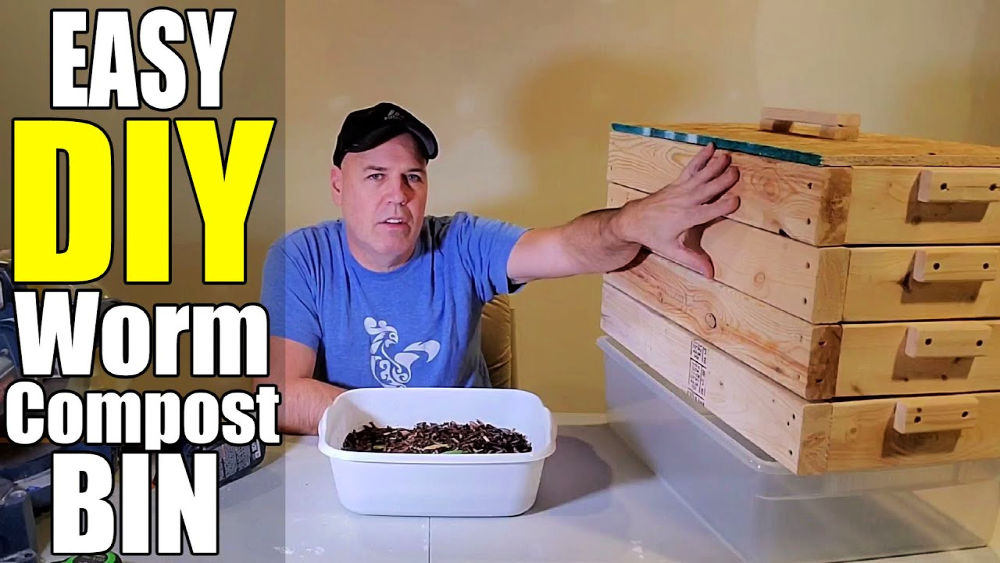DIY Worm Composting, Beginner's Guide

DIY Worm Composting: The Ultimate Beginner's Guide
Ever thought about turning your organic waste into something useful? DIY worm composting, also known as vermicomposting, is a fantastic way to reduce waste and live more sustainably. Let's dive into the world of wigglers and learn how to create your own homemade compost!
Why Vermicomposting?
Vermicomposting is a natural process that transforms organic waste into nutrient-rich fertilizer. It's an eco-friendly solution that reduces methane emissions from landfills and improves soil health. Plus, it's a fun and educational activity for the whole family!
Getting Started: DIY Worm Composting Systems for Beginners
Ready to start your worm composting journey? Here's what you'll need:
- A Container - Any plastic bin will do, but ensure it's clean and has a lid with air holes.
- Bedding - Shredded newspaper, coconut coir, or peat moss make great bedding for your worms.
- Worms - Red wigglers (Eisenia fetida) are the best for composting. You can find them online or at bait shops.
- Food Scraps - Fruit and veggie scraps, coffee grounds, and tea bags are all worm-approved.
Setting Up Your Bin
- Prepare the Bedding - Moisten the bedding material until it's as damp as a wrung-out sponge.
- Add the Worms - Gently place your worms on top of the bedding. They'll wiggle their way down.
- Feed Them - Bury a small amount of food scraps in one corner of the bin.
Feeding Your Worms
Worms eat about half their body weight in food per day. Feed them small amounts at a time and monitor how quickly they're eating. Adjust the amount as needed.
What to Feed Your Worms
Worms love:
- Fruit and veggie scraps
- Coffee grounds and filters
- Tea bags
- Crushed eggshells
- Shredded paper
Worms hate:
- Meat and dairy
- Citrus
- Onions and garlic
- Spicy foods
Harvesting Your Compost
After about 3-6 months, your bin should be full of rich, dark compost. Here's how to harvest it:
- Move the Contents - Dump the contents of your bin onto a large sheet of plastic under bright light.
- Separate the Worms - Worms hate light, so they'll burrow down. Keep removing the top layer of compost until you've separated most of the worms.
- Return the Worms - Put the worms and any undigested food back into the bin with fresh bedding.
Using Your Compost
Your homemade compost is a powerful fertilizer! Mix it into potting soil, sprinkle it around plants, or brew it into compost tea.
Troubleshooting Common Problems
Foul Odors - If your bin smells bad, you're likely feeding your worms too much or not burying the food.
Fruit Flies - These pests are attracted to rotting food. Bury food scraps well and keep a tight-fitting lid on your bin.
Worms Escaping - If your worms are trying to escape, the conditions in the bin might be too wet, too dry, or too acidic. Check the moisture levels and adjust as needed.
DIY Worm Composting: A Composting Tutorial
Vermicomposting is a simple process, but it's important to maintain the right balance of food, moisture, and air. For a step-by-step guide, check out the EPA's guide on composting at home.
Sustainable Living: The Benefits of Vermicomposting
Vermicomposting is a cornerstone of sustainable living. It reduces waste, conserves water, and improves soil health. Plus, it's a rewarding hobby that connects you with nature.
Conclusion
DIY worm composting is a fun and eco-friendly way to transform organic waste into nutrient-rich fertilizer. With a bit of patience and the right know-how, you'll be well on your way to living more sustainably. Happy composting!
FAQs
Q: How many worms do I need to start? A: A good rule of thumb is 1 pound of worms for every half-pound of daily food waste.
Q: Can I keep my worm bin outside? A: Yes, but ensure it's in a shady spot and protected from extreme temperatures.
Q: What if I go on vacation? A: Worms can survive for a few weeks without food. Just make sure their bedding is moist before you leave.
Q: Can I compost meat and dairy? A: No, meat and dairy attract pests and create odors. Stick to plant-based materials.
Q: How do I know if my worms are healthy? A: Healthy worms are reddish-brown, wiggle actively, and eat consistently. If they're not eating or moving much, check the bin's conditions.
0 Response to " DIY Worm Composting, Beginner's Guide"
Post a Comment